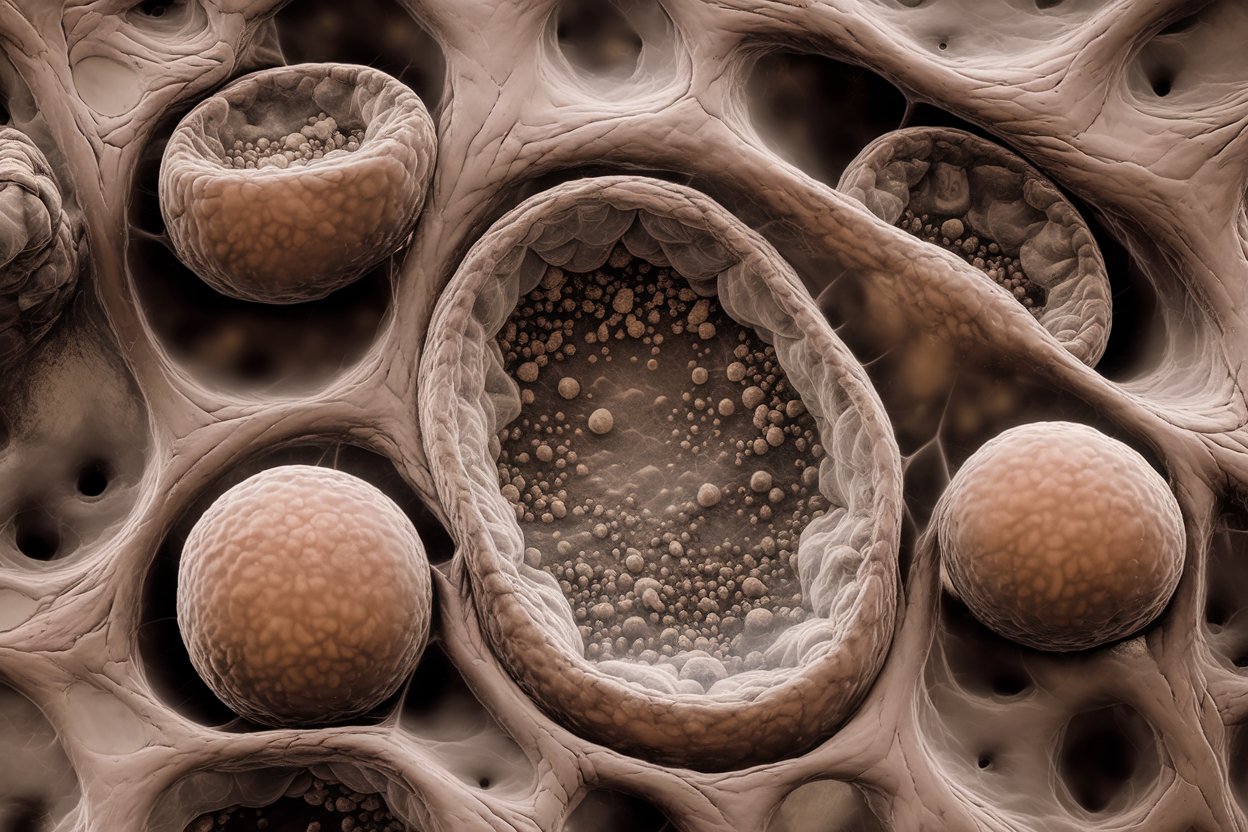
Mitochondrial Encephalomyopathy Aminoacidopathy might sound like a mouthful, but understanding it doesn't have to be complicated. This condition involves a mix of mitochondrial disorders and problems with amino acid metabolism. Mitochondria are the powerhouses of cells, producing energy essential for our bodies to function. When they don't work right, it can lead to serious health issues. Aminoacidopathy refers to disorders where the body can't properly process amino acids, the building blocks of proteins. Combining these two can result in a range of symptoms affecting muscles, the brain, and other organs. Ready to learn more? Here are 25 facts to help you grasp this complex condition.
Key Takeaways:
- Mitochondrial Encephalomyopathy affects energy production in cells, causing symptoms like muscle weakness and neurological issues. It's inherited and has no cure, but treatments and ongoing research offer hope for managing and understanding the condition.
- Symptoms of Mitochondrial Encephalomyopathy vary widely and can include muscle weakness, neurological issues, hearing and vision problems. While there's no cure, supportive care, dietary supplements, and ongoing research aim to improve patients' quality of life.
Understanding Mitochondrial Encephalomyopathy
Mitochondrial Encephalomyopathy is a complex condition affecting the mitochondria, the powerhouse of cells. This disorder impacts energy production, leading to various symptoms. Let's dive into some intriguing facts about this condition.
-
Mitochondrial Dysfunction: The primary issue in mitochondrial encephalomyopathy is the malfunctioning of mitochondria, which are responsible for producing energy in cells.
-
Genetic Origins: This condition is often inherited through mutations in mitochondrial DNA or nuclear DNA, affecting mitochondrial function.
-
Energy Crisis: Cells, especially in the brain and muscles, suffer from an energy deficit, leading to symptoms like muscle weakness and neurological issues.
-
Variable Symptoms: Symptoms can vary widely, even among family members, due to the heteroplasmic nature of mitochondrial DNA mutations.
-
Progressive Nature: The condition is progressive, meaning symptoms worsen over time as more cells become affected by mitochondrial dysfunction.
Symptoms and Diagnosis
Recognizing the symptoms and diagnosing mitochondrial encephalomyopathy can be challenging due to its variability. Here are some key facts about its symptoms and diagnosis.
-
Muscle Weakness: One of the most common symptoms is muscle weakness, which can affect mobility and daily activities.
-
Neurological Issues: Patients may experience seizures, strokes, and cognitive decline due to the brain's high energy demands.
-
Lactic Acidosis: Elevated levels of lactic acid in the blood can indicate mitochondrial dysfunction, as cells switch to less efficient energy production methods.
-
Hearing Loss: Sensorineural hearing loss is another symptom, as the inner ear cells also rely heavily on mitochondrial energy.
-
Vision Problems: Some patients may develop vision problems, including optic atrophy and retinal degeneration.
-
Biopsy Confirmation: Muscle biopsies can reveal characteristic changes in mitochondria, aiding in diagnosis.
Treatment and Management
While there's no cure for mitochondrial encephalomyopathy, various treatments can help manage symptoms and improve quality of life. Here are some important facts about treatment and management.
-
Supportive Care: Treatment focuses on managing symptoms and providing supportive care, such as physical therapy and occupational therapy.
-
Dietary Supplements: Coenzyme Q10, L-carnitine, and other supplements may help improve mitochondrial function and energy production.
-
Antioxidants: Antioxidants like vitamin E and alpha-lipoic acid can help reduce oxidative stress on mitochondria.
-
Seizure Management: Antiepileptic drugs are used to control seizures, a common symptom in many patients.
-
Regular Monitoring: Regular follow-ups with a healthcare team are essential to monitor disease progression and adjust treatments as needed.
Research and Future Directions
Ongoing research aims to better understand mitochondrial encephalomyopathy and develop new treatments. Here are some exciting facts about current research and future directions.
-
Gene Therapy: Researchers are exploring gene therapy to correct mitochondrial DNA mutations and restore normal function.
-
Stem Cell Therapy: Stem cell therapy holds promise for regenerating damaged tissues and improving mitochondrial function.
-
Drug Development: New drugs targeting mitochondrial function and energy production are being developed and tested in clinical trials.
-
Biomarkers: Identifying biomarkers can help diagnose the condition earlier and monitor treatment effectiveness.
-
Patient Registries: Patient registries and databases are being established to collect data and improve understanding of the condition.
Living with Mitochondrial Encephalomyopathy
Living with mitochondrial encephalomyopathy presents unique challenges, but with proper management, patients can lead fulfilling lives. Here are some facts about living with this condition.
-
Adaptive Devices: Assistive devices like wheelchairs and hearing aids can improve mobility and communication.
-
Support Networks: Support groups and online communities provide valuable resources and emotional support for patients and families.
-
Education and Advocacy: Raising awareness and advocating for research funding can help improve the lives of those affected by mitochondrial encephalomyopathy.
-
Personalized Care: Each patient's experience is unique, so personalized care plans are essential for managing symptoms and improving quality of life.
Final Thoughts on Mitochondrial Encephalomyopathy Aminoacidopathy
Understanding mitochondrial encephalomyopathy aminoacidopathy can be a game-changer. This rare condition affects the mitochondria, the powerhouse of cells, leading to various symptoms. From muscle weakness to neurological issues, the impact is significant. Early diagnosis and treatment can improve quality of life. Genetic testing plays a crucial role in identifying the disorder. While there's no cure, therapies and lifestyle changes can help manage symptoms. Awareness and research are key to better outcomes. Families affected by this condition should seek support and stay informed about the latest advancements. Knowledge empowers patients and caregivers to make informed decisions. Keep learning, stay proactive, and advocate for better healthcare solutions.
Frequently Asked Questions
Was this page helpful?
Our commitment to delivering trustworthy and engaging content is at the heart of what we do. Each fact on our site is contributed by real users like you, bringing a wealth of diverse insights and information. To ensure the highest standards of accuracy and reliability, our dedicated editors meticulously review each submission. This process guarantees that the facts we share are not only fascinating but also credible. Trust in our commitment to quality and authenticity as you explore and learn with us.
